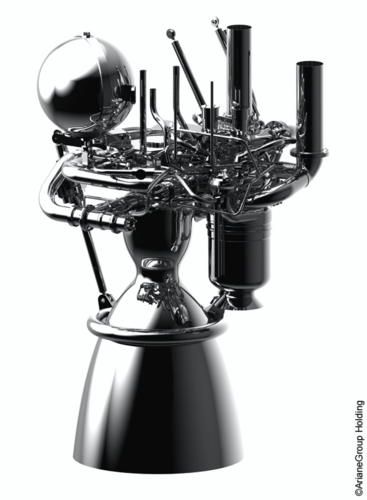National Geospatial-Intelligence Agency announces new contract awards under ‘Luno’ program
Wednesday, 02 July 2025 19:13
Structured as Luno A and Luno B, the five-year, indefinite delivery/indefinite quantity (IDIQ) contracts carry a combined ceiling of $490 million
The post National Geospatial-Intelligence Agency announces new contract awards under ‘Luno’ program appeared first on SpaceNews.
Moon mining is getting closer to reality: Why we need global rules for extracting space resources
Wednesday, 02 July 2025 18:10This request seems a bit unusual, so we need to confirm that you're human. Please press and hold the button until it turns completely green. Thank you for your cooperation!
Press and hold the button
If you believe this is an error, please contact our support team.
185.132.36.159 : 0680424a-0904-491a-9a34-736779f1
Bioplastic shelters support algae growth in Mars-like conditions for space habitats
Wednesday, 02 July 2025 17:00This request seems a bit unusual, so we need to confirm that you're human. Please press and hold the button until it turns completely green. Thank you for your cooperation!
Press and hold the button
If you believe this is an error, please contact our support team.
185.132.36.159 : 25ff2546-c332-4a2e-98df-972adc59
DARPA says decreasing launch costs, new analysis led it to cancel DRACO nuclear propulsion project
Wednesday, 02 July 2025 15:53
A DARPA official said the agency canceled a space nuclear propulsion project it was jointly developing with NASA in part because the effort was overtaken by lower launch costs.
Video: MTG-S1 and Copernicus Sentinel-4 launch highlights
Wednesday, 02 July 2025 14:40This request seems a bit unusual, so we need to confirm that you're human. Please press and hold the button until it turns completely green. Thank you for your cooperation!
Press and hold the button
If you believe this is an error, please contact our support team.
185.132.36.159 : 2008e4a2-cdf8-4e28-b3d5-10a05e90
Clingy planets can trigger own doom, suspect Cheops and TESS
Wednesday, 02 July 2025 14:00
Astronomers using the European Space Agency’s Cheops mission have caught an exoplanet that seems to be triggering flares of radiation from the star it orbits. These tremendous explosions are blasting away the planet’s wispy atmosphere, causing it to shrink every year.
This is the first-ever evidence for a ‘planet with a death wish’. Though it was theorised to be possible since the nineties, the flares seen in this research are around 100 times more energetic than expected.
Strategic Demand for Sovereign EO Satellites to Fuel $182.6B Market Surge
Wednesday, 02 July 2025 13:17
Defense Satellites to redefine Global Earth Observation Strategy
Wednesday, 02 July 2025 13:17
MTG-S1 and Copernicus Sentinel-4 mission highlights
Wednesday, 02 July 2025 12:00 Video:
00:03:30
Video:
00:03:30
Two meteorological missions – Meteosat Third Generation Sounder-1 (MTG-S1) and the Copernicus Sentinel-4 mission – have launched on board a SpaceX Falcon 9 from Cape Canaveral in Florida, US.
Both are world-class Earth observation missions developed with European partners to address scientific and societal challenges.
The MTG-S1 satellite will generate a completely new type of data product, especially suited to nowcasting severe weather events, with three-dimensional views of the atmosphere. It is the second in the MTG constellation to be prepared for orbit and is equipped with the first European operational Infrared Sounder instrument.
Copernicus Sentinel-4 will be the first
This is not the time to cut space-enabled medical research
Wednesday, 02 July 2025 12:00
Research that leverages space to develop treatments for blindness, cancer, and Parkinson’s disease is jeopardized by the $6.1 billion NASA budget cuts recently announced for 2026 by President Trump.
Space Force to fund development of Atomic-6 solar power for satellites
Wednesday, 02 July 2025 12:00
Based in Marietta, Georgia, Atomic-6 makes solar arrays that are designed to fold and unfold
Boeing ships more O3b mPower satellites with fixes SES might no longer need
Wednesday, 02 July 2025 11:30
Boeing has shipped two more O3b mPower broadband satellites to SES with hardware fixes the operator might no longer need thanks to a surprising assist from solar storms.
Weather clears as SpaceX launches European satellite
Wednesday, 02 July 2025 10:30This request seems a bit unusual, so we need to confirm that you're human. Please press and hold the button until it turns completely green. Thank you for your cooperation!
Press and hold the button
If you believe this is an error, please contact our support team.
185.132.36.159 : 02da94ed-a54a-408d-86b7-170396b3



 Image:
Brave for space
Image:
Brave for space